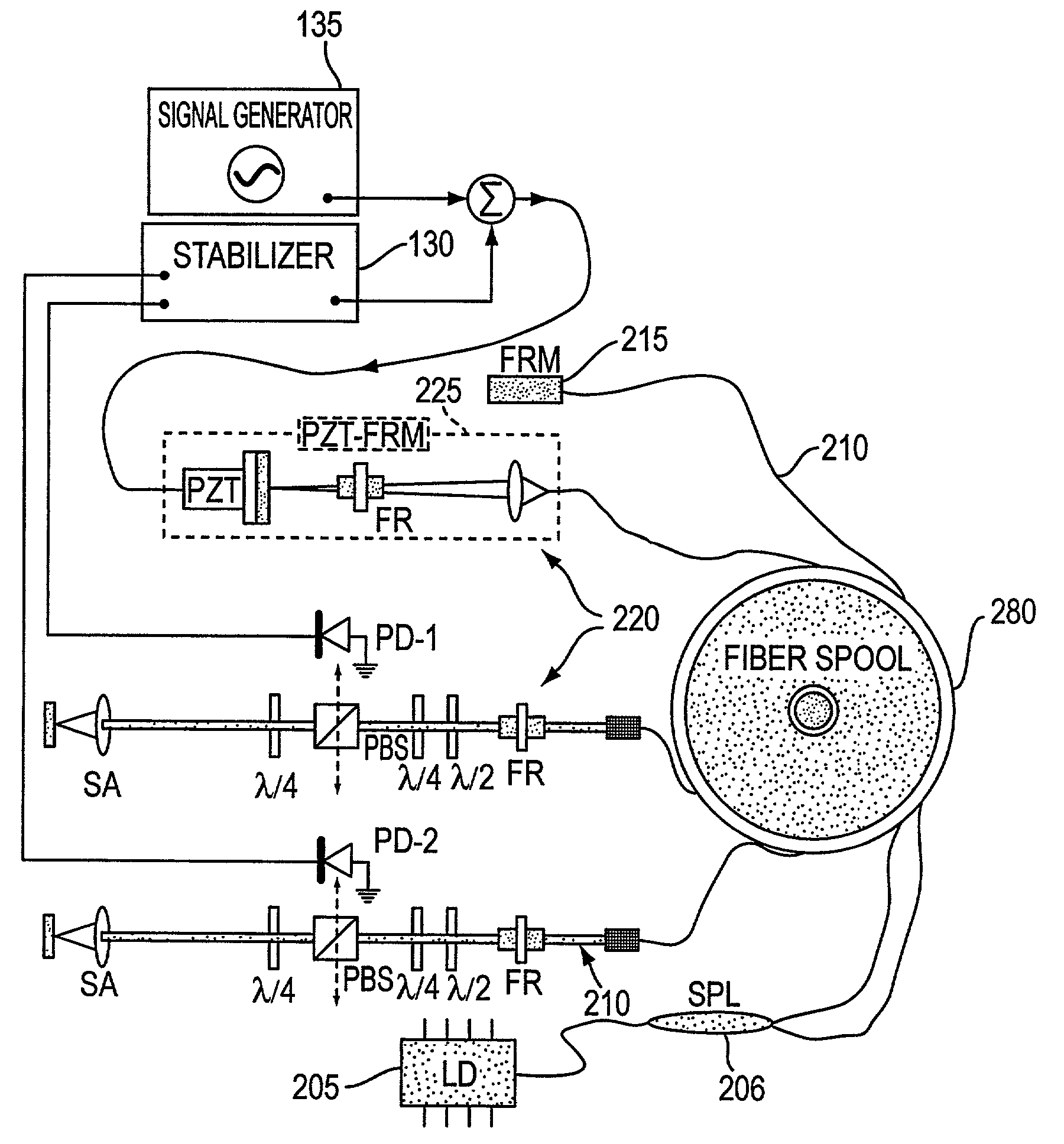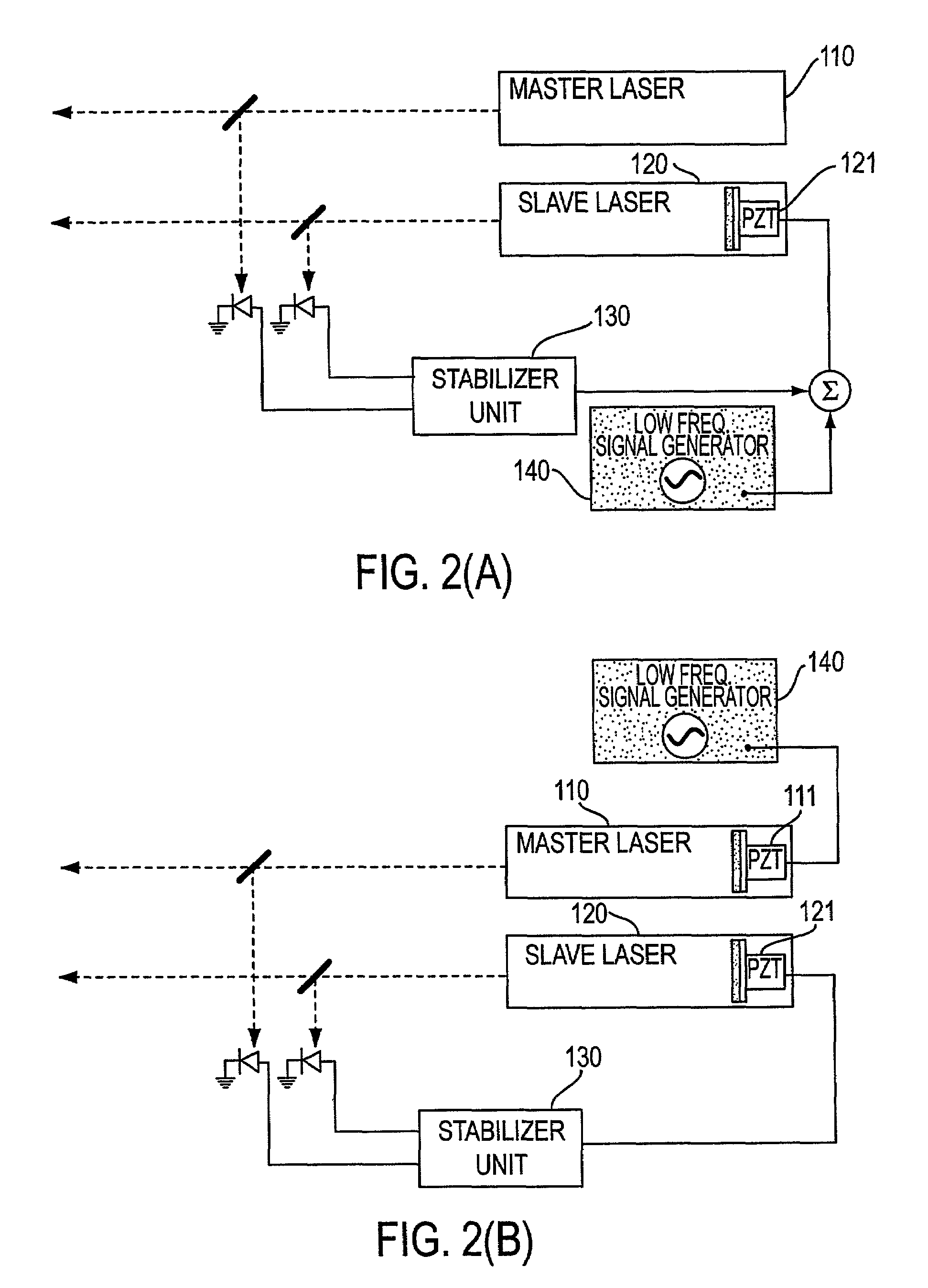Scanning temporal ultrafast delay methods and apparatuses therefor
- Summary
- Abstract
- Description
- Claims
- Application Information
AI Technical Summary
Benefits of technology
Problems solved by technology
Method used
Image
Examples
Embodiment Construction
[0046]The embodiments of the present invention are described below in more detail with reference to the above drawings, in which like reference numerals refer to the same or similar elements.
Principle of Fast Scanning Method
[0047]The present invention, like the free-scanning laser system, consists of two lasers, a master laser 110 and a slave laser 120, which have nearly identical repetition rates as shown, for example, in FIG. 2(A). However, unlike the free-scanning laser system, pulses output from the master and slave lasers are not allowed to totally scan through each other. Rather, while master laser 110, which has a wavelength λ1, is held at a constant repetition rate ν1 or is allowed to drift of its own accord, the repetition frequency ν2 of slave laser 120 is dithered about the repetition rate of master laser 110. This dithering of the repetition rate is accomplished by changing the cavity length (L2) of slave laser 120 at a “high” frequency, for example, in the range of 30 H...
PUM
 Login to View More
Login to View More Abstract
Description
Claims
Application Information
 Login to View More
Login to View More - R&D
- Intellectual Property
- Life Sciences
- Materials
- Tech Scout
- Unparalleled Data Quality
- Higher Quality Content
- 60% Fewer Hallucinations
Browse by: Latest US Patents, China's latest patents, Technical Efficacy Thesaurus, Application Domain, Technology Topic, Popular Technical Reports.
© 2025 PatSnap. All rights reserved.Legal|Privacy policy|Modern Slavery Act Transparency Statement|Sitemap|About US| Contact US: help@patsnap.com



